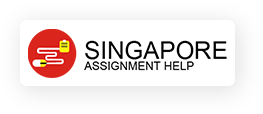| University | Singapore University of Social Science (SUSS) |
| Subject | COR160: Essential Academic Writing Skills |
In this assessment task
you are required to write a short response (900 words) to an academic article that demonstrates your understanding of paraphrasing, paragraph structure, and critical thinking. In the first section, you are required to summarise the main position of the following article:
Evering, LC & Moorman, G 2012, ‘Rethinking plagiarism in the digital age’, Journal of Adolescent & adult literacy, vol. 56, no. 1, pp. 35–44. In the subsequent paragraphs,
write responses to Evering and Moorman’s article using 3 academic articles you have researched. The content from these articles should be contrasted with the main claims of the first article. In short, you are required to look for similarities and differences between texts that address the same topic. No introduction or conclusion is needed.
In addition to demonstrating your ability to present an argument as well as accurately reference and paraphrase, you should follow the principles outlined in Academic Culture and Peck and Coyle on structuring paragraphs (see the readings for week 5).
Each paragraph should have a topic and linking sentence, a definite argument and reference to relevant research. The main idea is to create a logical sequence in each paragraph, as well as a clear flow from one paragraph to the next.
Use the Harvard Referencing Convention in all of your assessment tasks. Details of this convention are available at: Note: you are required to use page numbers for both paraphrasing and direct quotation.
Rethinking Plagiarism in the Digital Age
public and private schools, colleges, and universities have academic integrity or honor codes and consequences for plagiarism, but few professors and teachers explicitly address what plagiarism means or provide examples of individual contexts and degrees of unauthorized copying. More important, students are seldom engaged in instruction or discussion about what plagiarism is, why it is a problem, and how it can be avoided (Power, 2009). When an incident does occur, consequences can vary greatly, ranging from swift and severe punishment to a slap on the wrist to nothing at all (Robinson-Zanartu, Pena, E., Cook-Morales, Pena, A., Afshani, & Nguyen, 2005).
Punishment is often the same whether the incident was blatant, passive, or incidental (McCabe, 2005a; Venus & Eisner, 2008). In this article, we will make the case that plagiarism is a complex issue in need of reexamination. A common misconception is that consensus exists on what actions constitute plagiarism and whether engage
in plagiarism and other forms of academic dishonesty is a major breach of ethics. There seems to be little concern for differentiating degrees of seriousness such that the intentional copying of large amounts of text without any acknowledgment is often viewed and treated the same as failing to properly cite sources. There also seems to be a lack of understanding that plagiarism is a socially constructed concept that is not universally recognized; for example, the Amish see no problem with copying text from other sources and often teach the practice in their schools (Fishman, 1981).
The current concept of plagiarism is based on a capitalist view of property and ownership. It assumes that everything of value can be owned, bought, and sold and that ideas, knowledge, and art are created by individuals who have the right of ownership. This view is deeply ingrained in Western culture. The U.S. Constitution grants Congress the right “to promote the Progress of Science and useful Arts, by securing for limited Times to Authors and Inventors the exclusive Right to their respective Writings and Discoveries.” But the notion that ideas can be one is tenuous at best. Is it really reasonable for Girl Scouts to be forced to pay royalties for singing songs around campfires or for the American Society of Composers, Authors, and Publishers to collect a fee
Traditional definitions of plagiarism are further challenged by the digital revolution. The ways that knowledge is currently created and distributed require that plagiarism be given “close reconsideration we develop technologies that broaden who may produce and circulate cultural materials (Jenkins, 2006, p. 189).” Easy access to massive amounts of information makes policing for ownership of ideas nearly impossible. This situation has caused the current Millennial generation to see knowledge ownership, acquisition, and distribution in radically different terms than in previous generations. Clearly, academia is past due in reevaluating the concept and how we deal with it in secondary and higher education
Buy Custom Answer of This Assessment & Raise Your Grades
Avail of our professional assignment writing help and complete your (COR160) Essential Academic Writing Skills Assignment quickly. Our well-qualified experts are skilled and knowledgeable to offer excellent writing on COR160: Essential Academic Writing Skills Assignment. Our experts also assure you to always provide solutions before the student's specific deadline.
Looking for Plagiarism free Answers for your college/ university Assignments.
- NUR3015 Health and Social Policy Summative Assignment Report 2025/26 | SIT
- PS5009MKT Digital Business Assessment Coursework | Coventry University
- 5007MKT Marketing Insight Assignment Coursework 2 – Coffee Shop Industry | Coventry University
- HL3044 The Legends of King Arthur Assignment Semester 1, AY2025-26 | NTU
- AVM343 Airport Design and Planning ECA July Semester 2025 | SUSS
- ICT239 Web Application Development End-of-Course Assessment – July Semester 2025
- BX2091 Tourism & Leisure Management Assessment Task 3, 2026 | JCU
- Project on Probability and Statistics using Matlab Assignment | NUS
- Health Economics and Policy Assessment Essay | Teesside University London
- BCAF004 Management Accounting & Finance Individual Assignment 1 AY 2025/2026 | TP

